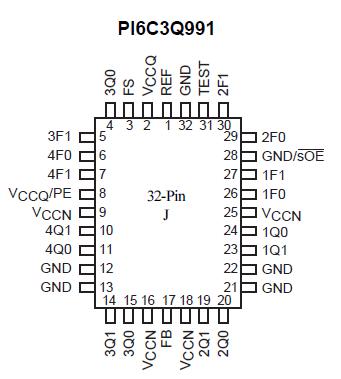PI6C3Q991: Features: · PI6C3Q99X family provides following products: PI6C3Q991: 32-pin PLCC version PI6C3Q993: 28-pin QSOP version· Inputs are 5V I/O Tolerant· 4 pairs of programmable skew outputs· Low skew: 2...
floor Price/Ceiling Price
- Part Number:
- PI6C3Q991
- Supply Ability:
- 5000
Price Break
- Qty
- 1~5000
- Unit Price
- Negotiable
- Processing time
- 15 Days
SeekIC Buyer Protection PLUS - newly updated for 2013!
- Escrow Protection.
- Guaranteed refunds.
- Secure payments.
- Learn more >>
Month Sales
268 Transactions
Payment Methods
All payment methods are secure and covered by SeekIC Buyer Protection PLUS.

 PI6C3Q991 Data Sheet
PI6C3Q991 Data Sheet







